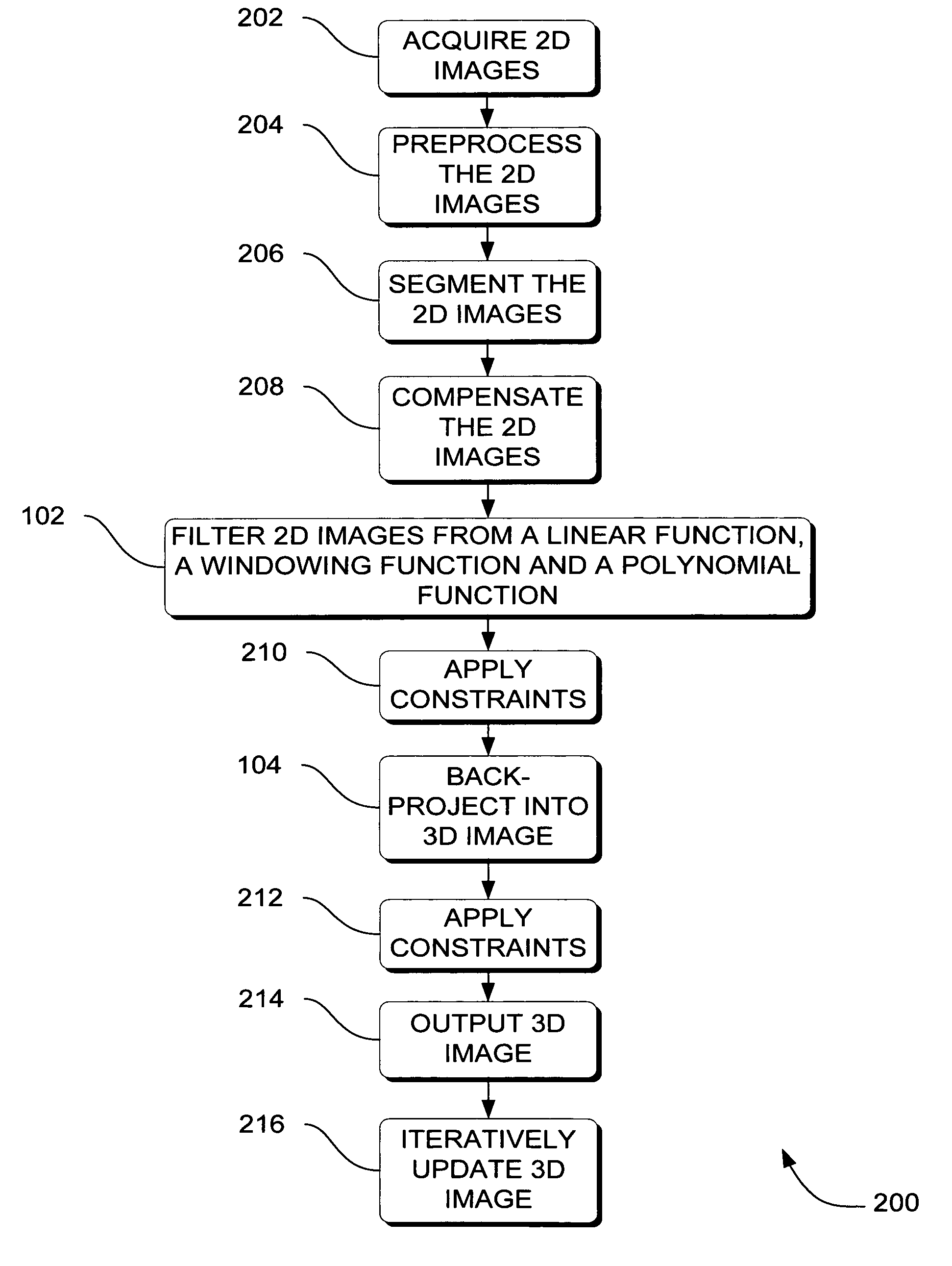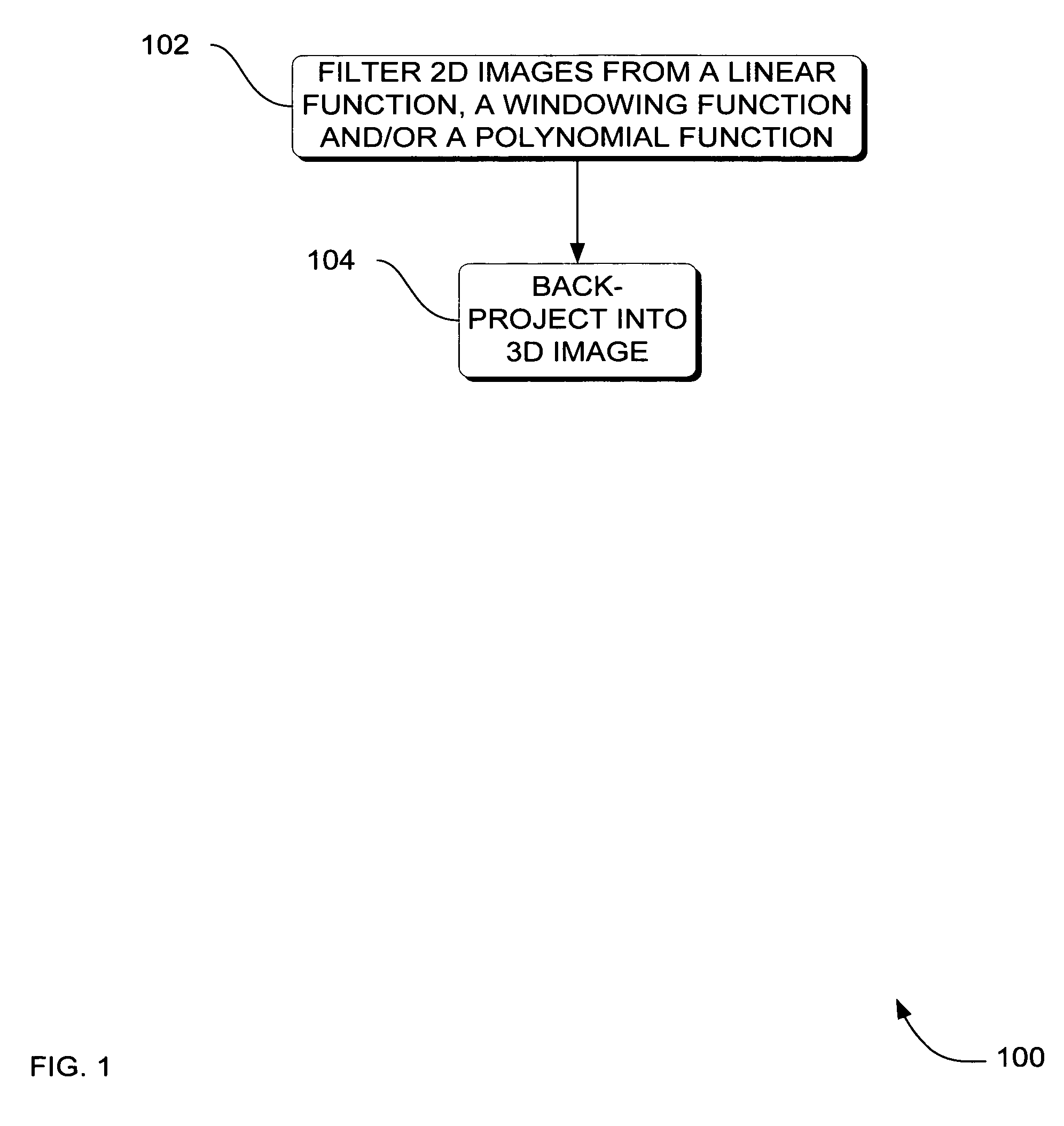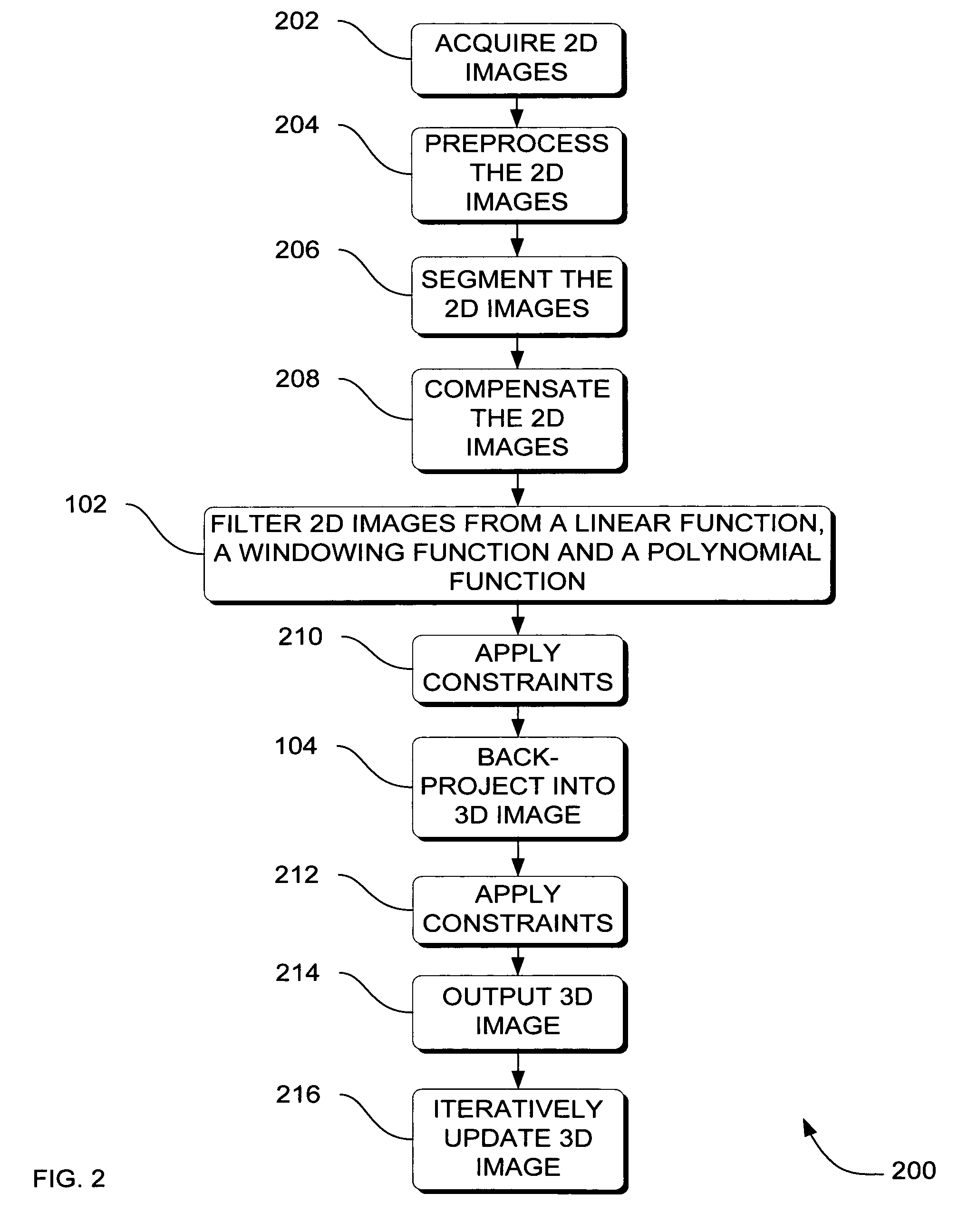Systems, methods and apparatus for specialized filtered back-projection reconstruction for digital tomosynthesis
a tomosynthesis and back-projection technology, applied in the field of digital imaging, can solve the problems of introducing reconstruction artifacts, unable to recover previously described loss of contrast for small structures, and the use of conventional shift and add algorithm suffers from considerable problems
- Summary
- Abstract
- Description
- Claims
- Application Information
AI Technical Summary
Benefits of technology
Problems solved by technology
Method used
Image
Examples
an embodiment
Methods of an Embodiment
[0036]In the previous section, a system level overview of the operation of an embodiment was described. In this section, the particular methods performed by an imaging system, a server and / or a client of such an embodiment are described by reference to a series of flowcharts. Describing the methods by reference to a flowchart enables one skilled in the art to develop such programs, firmware, or hardware, including such instructions to carry out the methods on suitable computerized system in which the processor of the system executes the instructions from computer-accessible media. Methods 100-300 and 700-900 are performed by a program executing on, or performed by firmware or hardware that is a part of, a computer, such as computer 1202 in FIG. 12.
[0037]FIG. 2 is a flowchart of a method 200 of generating a 3D image from 2D images using specialized filter, performed by an imaging system according to an embodiment. In method 200, a plurality of 2D views of the ...
PUM
 Login to View More
Login to View More Abstract
Description
Claims
Application Information
 Login to View More
Login to View More - R&D
- Intellectual Property
- Life Sciences
- Materials
- Tech Scout
- Unparalleled Data Quality
- Higher Quality Content
- 60% Fewer Hallucinations
Browse by: Latest US Patents, China's latest patents, Technical Efficacy Thesaurus, Application Domain, Technology Topic, Popular Technical Reports.
© 2025 PatSnap. All rights reserved.Legal|Privacy policy|Modern Slavery Act Transparency Statement|Sitemap|About US| Contact US: help@patsnap.com



